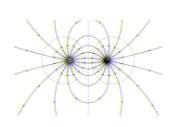The Capacitor is one of the three major components in an electrical circuit. It is most commonly used as a reservoir for stored energy. In addition to this, it also serves as a filter or power supply that helps regulate voltage in electrical circuits. Moreover, it can also break down alternating current into direct current (DC). This article aims at highlighting the concept of Capacitor with its types, functions, and significance in detail.
What are Capacitors?
The Capacitor in a circuit is depicted as a black box that holds an electric charge in a polarised condition. It consists of two plates connected by an insulator known as a dielectric. This type of Capacitor finds application, especially in electronic devices such as radio, television, radio telescopes, etc.
Function:
The Capacitor serves as an auxiliary power source during some process within the system. It stores energy and breaks down alternating current into direct current (DC), which helps smoothen out voltage fluctuations present in the system. It does not serve any role in the circuit like the inductor, but it acts as a helper for inductors. It is also used in balancing the impedance. It acts as a bridge between the changing voltages and helps maintain the steady flow of current.
Types of Capacitor:
There are mainly three types of capacitors: fixed, variable, and Electrolytic. Each class is designed for a specific purpose and performs different functions within the circuit, respectively.
1) Fixed Capacitor:
A fixed capacitor is an electrical component that stores energy in electrical form instead of mechanical form. It is designed to keep the electric charge which flows into it due to its property known as conductivity. A fixed capacitor consists of two plates (plates) made from a conductive material separated by an insulating layer known as a dielectric. The dielectric layer prevents the electric charge between the plates from flowing through. A fixed capacitor is designed to hold a fixed amount of payment instead of having adjustable capacitance. They are also capable of storing energy from passing current between their plates. There are different applications of fixed capacitors, which are highlighted below:
Radio Transmitters: Radio transmitters work on alternating current (AC) and draw energy from a power supply. As AC fluctuates in voltage and frequency, it can be transformed into DC using a DC converter called a rectifier. The rectified DC is then fed directly into the radio frequency circuit instead of passing through a capacitor, which partially recharges it.
Fixed capacitors are connected in parallel with each of the rectifiers and act as a storage unit for the current drawn from the power supply. This current is then passed into the antenna, which helps transmit signals to a receiving station.
2) Variable Capacitor:
These capacitors are also known as tunable capacitors or tuning capacitors. They consist of two plates separated by a dielectric layer, just like fixed capacitors. However, they differ in the way they store charge. A variable capacitor consists of stacked plates with different capacitance values. The capacitance value changes depending on the state of a control electrode contained between two plates. It is used in electronic devices to adjust the voltage or current. Also, it can be used to make adjustments in instruments such as voltmeters and oscilloscopes, etc. In addition, it is also used in circuit breakers to compensate for fluctuating line voltages.
Variable capacitors are connected in series with the control electrode and then connected across the AC line or circuit that needs to be adjusted. When the control electrode is grounded, it will effectively draw less current since the voltage across the Capacitor is much reduced.
3) Electrolytic Capacitor:
Electrolytic capacitors are mainly used in electronic circuits as energy storage units to help smooth out fluctuations and noise in a course. They consist of two metal plates separated by a dielectric layer and have an electrolyte that allows current to flow through them. A grid located on top of the plates acts as electrodes that receive electrons during charging while they release electrons when discharged. An electrolytic capacitor stores energy in the form of electrons within its leaves due to their conductivity. The stored electrons are released in the form of current during discharging. Electrolytic capacitors are much smaller in size than other types. They can also break down alternating current into direct current (DC).
Conclusion:
Capacitors find application in electronic devices such as radio and television antennae, installation amplifiers, oscillators, radio transmitters, etc. They are used to convert AC voltages into DC voltage, smooth out the voltage fluctuations and store energy. It can also be used in balancing impedance within a circuit.
 Profile
Profile Settings
Settings Refer your friends
Refer your friends Sign out
Sign out







